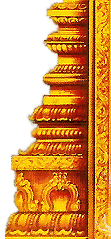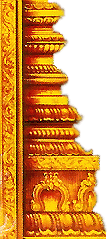|
|
Home >>
Murugan >
sri Dandayuthapani temple
|
| |
- Details
- Path
- Map
- Photos
- Near By Temple
| |
| Sri Dandayuthapani temple |
|
| |
|
![[Image1]](http://img1.dinamalar.com/Kovilimages/T_500_1074.jpg)
|
| | |
| | | |
|
|
|
Moolavar | : |
Dandayuthapani, Marudachalamurthy |
|
|
Urchavar | : |
- | |
|
Amman / Thayar | : |
Valli, Deivanai | |
|
Thala Virutcham | : |
Marudham tree | |
|
Theertham | : |
Marudhu spring | |
|
Agamam / Pooja | : |
| |
|
Old year | : |
1000-2000 years old | |
|
Historical Name | : |
Marudhavarai | |
|
City | : |
Marudamalai | |
|
District | : |
Coimbatore
| |
|
State | : |
Tamil Nadu |
| |
|
|
| |
|
|
 | Singers: |  |
| |
|
|
| |
Lord Muruga of the temple is praised by Saint Arunagirinathar in his Tirupugazh hymns. |
|
| |
|
|
 |
Festival: |
 |
| |
|
|
| |
Devotees carry 108 milk pots to the Lord on the Vaikasi Visakam day in May-June. 10 day Brahmmotsavam is celebrated with Thaipoosam in January-February. The wedding festival is celebrated in the morning of Thai poosam day and a car festival in the evening when the Lord is taken in procession on Elephant vahana. The Lord also comes in procession every day in golden chariot. |
|
| |
|
|
 |
Temple's Speciality: |
 |
| |
|
|
| |
Lord Vinayaka and Lord Muruga grace in the temple as swayambumurthis. |
|
| |
|
|
 |
Opening Time: |  |
| | | | | |
The temple is open from 5.30 a.m. to 1.00 p.m. and 2.00 p.m. to 8.30 p.m. |
|
| | | |
 |
Address: |  |
| | | | | |
Shri Dandayuthapani Temple, Marudamalai, Coimbatore district |
|
| | | |
 |
Phone: |  |
| | | |
| |
+91-422-2422 490 | |
|
| | |
 |
General Information: |  |
| |
|
|
| |
This is a hill temple with about 837 steps. There is a shrine for Lord Varadaraja Perumal and a shrine for Sapthkannikas (seven maidens) on way to the shrine of Pambatti Siddha. Special pujas are performed here on the Aadi Perukku day (18th day of Aadi month – July-August. There is also shrine for Idumban on way to the hill temple and a Tiger Vahana opposite to his shrine.
|
|
| |
|
|
 |
Prayers |  | |
|
| | | |
Those facing obstacles in marriage alliance and problems of welfare of children pray to Lord Vinayaka and Lord Muruga. They tie Mangal Sutras and cradles in the tree here. The sacred ash used in the puja of Pambatti Siddhar is given as Prasad to the devotees. Those facing snake aspects (Naga dosha) and suffering from poisonous bites consume it with water for cure. Those suffering from skin problems apply it on body. They have a staunch faith that this sacred ash would cure them. | | |
|
| |  |
Thanks giving: |  | |
|
| | | |
Seeking mental peace and relief from Naga doshas, devotees light ghee lamps in the shrine of Pambatti Siddhar offering white flowers with sweet nivedhanas. | | | |
| |  |
Greatness Of Temple: |  |
| |
|
|
| |
Arthajama Puja: The idol for Lord Muruga was made by Pambatti Siddhar which is adoring the sanctum sanctorum in the temple. As in Palni, He is gracing with a staff as Dandapani, He has a tuft too, wearing anklets at the feet. The Lord graces in three styles of dressings (Alankaras) Royal form, sacred ash and sandal paste dressings. On special days, the Lord is covered with silver and gold ornaments, crown etc. Only during the Arthjama Puja, Lord Muruga appears as Dandapani (holding a stick in Hand) in a simple form wearing a dhoti.
Saint Arunagiriar has sung the praise of Marudhachalamurthy in his Tirupugazh hymns. This temple is regarded as the seventh army camp (Padaiveedu) of Lord Muruga.
Pambatti Siddhar: This shrine is in a cave in the midst of rocks of the hill temple. He holds the Magudi, a musical instrument to entice snakes in his right hand and a staff in the left. There is a Shivalinga with Nagar (snake). Pujas are performed to Pambatti Siddhar also after pujas to Lord Muruga. A bowl of milk is left in this shrine daily which is found consumed partially the next day. It is believed that Pambatti Siddhar uses this milk for pujas to Lord Muruga.
Snake Muruga: There is a snake form in the rock in the Pambatti Siddhar shrine. It is said that the Lord granted darshan to the Siddhar in the form of a snake. Hence, devotees consider this as Muruga Himself. There are three other forms behind this place appearing as Peetas- seats, which are worshipped as Lord Shiva, Mother Ambica and Lord Vinayaka. Generally, Lord Muruga occupies the place between Lord Shiva and Mother Ambica. Here, Vinayaka is with His parents.
Marudhachalamurthy: Lord Muruga in this temple is called Marudhachalamurthy as He is in the midst of Marudham trees and herbal plants containing high medicinal properties. Marudha tree is the holy tree of the temple. It is said that the holy spring Marudha Sunai springs from the bottom of a Marudha tree used for the abishek of Lord Muruga.
Aadhi Murugan: Lord Shiva graces as swayambumurthy in ancient Shiva temple. Here Lord Muruga is a swayambumurthy. His consorts Valli and Deivanai are also Swayambus. There is a crack behind the Swayambu Muruga. Valli is taller than Deivanai. He is the original Lord of the temple and his shrine is called the original sanctum sanctorum-Aadhi Moolasthanam.. The Puja is first performed in this shrine and then to Muruga in the present sanctum sanctorum. Milk abishek is performed to this Muruga during Krithika star days.
Pancha Vruksha Vinayaka: While generally Vinayaka graces from under a bodhi tree (Arasamaram) in all temples, he is under five trees (Pancha Vrukshas) – Arasu, Athi, Neem, Vanni and Korakkatai - bearing the name Pancha Vruksha Vinayaka. Lord Muruga by his side graces with His weapon Vel and peacock vehicle.
Somaskanda Shrine: Lord Muruga with his divine parents Lord Shiva and Mother Ambica is known as Somaskanda. Here too, Lord Muruga graces in the same form. Though a Muruga temple, there is a shrine for Lord Patteeswarar on the right and one for Mother Maragadhambika on the left.
Beloved Brother Vinayaka: There is a shrine for Thanthondri Vinayaka as a swayambu with an elephant head only (without body), His tusk showing the shrine at the top of the hill. Another Vinayaka idol also is installed here nearby. The first puja is performed to the Swayambu Vinayaka followed by the one to the other Vinayaka. Special pujas are performed to Vinayaka also on Krithika, Sashti, Visakam and New Moon days as to Muruga. Hence, this Vinayaka is praised as ‘Beloved Brother Vinayaka.’
Devotees visiting this temple should worship this Vinayaka before proceeding on the steps. Those going on the ghat road bypass this Ganapathy forgetting the rule to worship the Lord before proceeding further.
Muruga riding a horse: Though the known vehicle of Lord Muruga is peacock, in some temples, He is taken on a horse also in procession. The story behind this tradition is this. In days of yore, some robbers entered the temple and escaped with their booty. Lord Muruga intercepted them and recovered the stolen items and converted them into rocks. The foot step signs of the horses are still visible on a rock called ‘horse foot print stone – Kudirai Kulambukkal’. There is a sculpture depicting Lord Muruga on a horse.
|
|
| |
|
|
 |
Temple History: |  |
| |
|
|
| |
A siddha saint, named Pambatti Siddhar, from his young age used to catch snakes, undo their poisonous effects, prepare medicines to cure such bites etc. People called him Pambu Vaidya – Snake doctor. He came to this place to find a snake having a gem – Nagarathna pambu. A sage – rishi met him on the way and told him that the purpose of life was to find the snake in the human body (Kundalini), control it by yoga and added that what he was doing was sheer waste. Pambatti Siddhar got relieved from ignorance and began to meditate upon Lord Muruga. The Lord gave Siddha darshan with His consorts Valli and Deivanai. Lord Muruga is praised as Marudamalai Ma Mani. (Ma-big, Mani-gem). |
|
| |
|
|
 |
Special Features: |  |
| |
|
|
| |
Miracle Based:
Lord Vinayaka and Lord Muruga grace in the temple as Swayambumurthy.
|
|
| |
|
|
|
| |
|
|
|
|
| | Location :
Marudhamalai is 14 km from Coimbatore. Buses are conveniently available from Gandhipuram bus stand.
Near By Railway Station :
Coimbatore
Near By Airport :
Coimbatore
Accomodation :
Coimbatore:
Hotel Blue Star: + 91-422- 223 636, 223 0635 (8 lines)
Ambica Lodge: + 91-422-223 1043, 223 1660
Hotel Ashwini: +91-422-223 3405, 223 5454
Hotel E S S Paradise: +91-422-223 0276 (3 lines)
Sri Lakshmi: +91-422-223 6339 (6 lines)
Sri Murugan: +91-422-436 2473 (5lines)
Hotel Ramoos: +91-422-439 3000, 439 3311
Vaidurya: +91-422-429 7777
Hotel A P: +91-422-230 1773 (5lines).
| |
| |
|
|
![[Gal1]](http://img1.dinamalar.com/KovilImages/GalleryThumb/G_T1_1074.jpg)
|
|
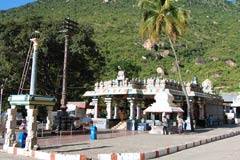 |
| ராஜஅலங்காரத்தில் மூலவர் சுப்ரமணியசுவாமி |
|
|
|
| |
|
|
![[Gal1]](http://img1.dinamalar.com/KovilImages/GalleryThumb/G_T3_1074.jpg)
|
|
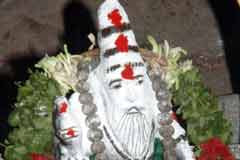 |
| குதிரை வாகனத்தில் முருகன் |
|
|
| மூலவர் பாம்பாட்டி சித்தர் |
|
| |
|
|
![[Gal1]](http://img1.dinamalar.com/KovilImages/GalleryThumb/G_T5_1074.jpg)
|
|
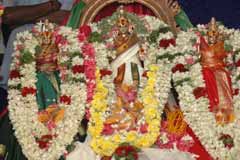 |
| வள்ளி-தெய்வானையுடன் முருகன் |
|
|
|
| |
|
|
![[Gal1]](http://img1.dinamalar.com/KovilImages/GalleryThumb/G_T7_1074.jpg)
|
|
 |
| பாம்பாட்டி சித்தருக்கு காட்சி தந்த முருகன் |
|
|
|
Warning: Undefined array key "G_T10" in /var/www/html/or-temple-st.dinamalar.com/public_html/en/new_en.php on line 594
Deprecated: explode(): Passing null to parameter #2 ($string) of type string is deprecated in /var/www/html/or-temple-st.dinamalar.com/public_html/en/new_en.php on line 594
Warning: Undefined array key "G_L10" in /var/www/html/or-temple-st.dinamalar.com/public_html/en/new_en.php on line 595
Deprecated: explode(): Passing null to parameter #2 ($string) of type string is deprecated in /var/www/html/or-temple-st.dinamalar.com/public_html/en/new_en.php on line 595
| |
|
|
![[Gal1]](http://img1.dinamalar.com/KovilImages/GalleryThumb/G_T9_1074.jpg)
|
|
|
| சுயம்பு சற்பத்துடன் பாம்பாட்டி சித்தர் சன்னதி |
|
|
Warning: Undefined array key 1 in /var/www/html/or-temple-st.dinamalar.com/public_html/en/new_en.php on line 627
|
|
|
 |
|
|
|
|
|

